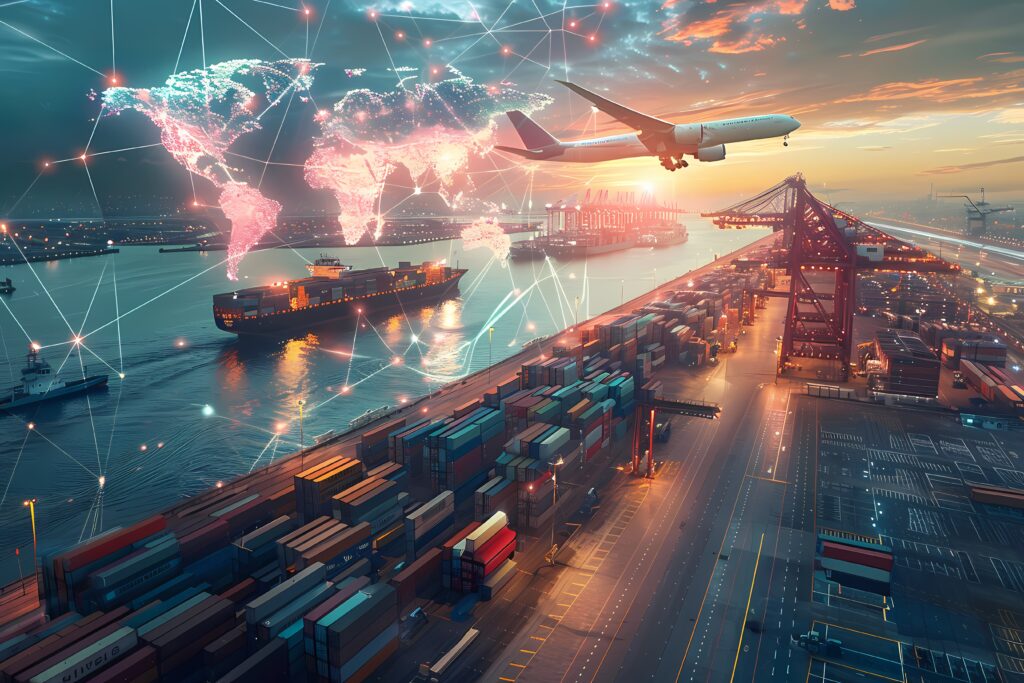This trend is not a fleeting correction; it’s a long-term economic strategy driven by risk, cost, and consumer demands. The goal is to move from single-source reliance to a globally distributed and localized supply network.
1. The Drivers of the Shift
The pivot toward nearshoring and diversification is powered by three major forces:
- Geopolitical Risk: Ongoing trade wars, tariffs, and political instability (e.g., US-China relations, the conflict in Ukraine) have forced executive boards to view geographic concentration as a major financial risk. Companies are now willing to pay a “resilience premium” to secure production outside of high-risk zones.
- Cost Management and Speed: While manufacturing wages are often higher in nearshored locations (like Mexico or Eastern Europe) than in Asia, this cost is offset by significant reductions in ocean freight costs, inventory carrying costs, and lead times. Shorter supply chains are faster supply chains, allowing companies to react more quickly to volatile consumer demand.
- Sustainability & Compliance: Localizing production reduces the carbon footprint associated with long-haul shipping. Furthermore, it simplifies compliance with complex and increasing labor, environmental, and trade regulations, especially when moving production closer to major markets like the EU and the US.
2. Nearshoring vs. Diversification
It is important to differentiate between the two components of this trend:
| Strategy | Focus & Goal | Example |
| Nearshoring (Regionalization) | Moving production assets to a neighboring country or within the same economic bloc (e.g., US companies moving to Mexico; European companies moving to Eastern Europe). Goal: Reduce transit time and costs while maintaining geographic proximity to the final consumer market. | The automotive industry expanding heavily into Mexico to serve North American assembly plants. |
| Diversification (The “China Plus One” Strategy) | Adding new, distinct production locations across multiple low-cost countries outside the primary hub (e.g., Vietnam, India, Thailand, Malaysia). Goal: De-risk the global manufacturing footprint by avoiding a single-point-of-failure and gaining access to new labor pools. | Technology companies establishing new production lines in India and Vietnam for components previously sourced exclusively from China. |
3. Operational Challenges and Implementation
Executing this shift is complex, often requiring multi-year projects:
- Infrastructure Investment: Nearshoring requires massive capital investment in new manufacturing facilities, distribution centers, and regional logistics networks.
- Supplier Development: Companies must spend time and resources qualifying and developing an entire ecosystem of Tier 2 and Tier 3 suppliers in new geographies, which can be a slow process.
- Talent and Skills: Attracting and retaining the specialized engineering and supply chain talent needed to manage complex, highly integrated regional operations is a major challenge.
This strategic pivot is creating a more modular, flexible, and geographically redundant global economy, though it comes at the expense of the previous single-focus model centered purely on finding the lowest unit manufacturing cost.
The shift to nearshoring involves complex decisions, from analyzing the impact on transportation to understanding the nuances of trade agreements. To successfully transform and de-risk your global footprint, you need a clear strategy and expert execution. Contact OPEXO today. Our expertise in hands-on operational execution can help you assess your current network, build a tailored nearshoring strategy, and ensure your investment delivers long-term performance and sustainable competitive advantage.


